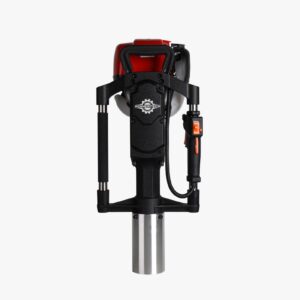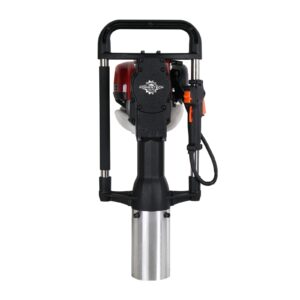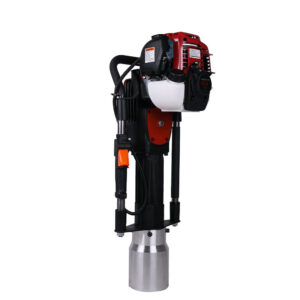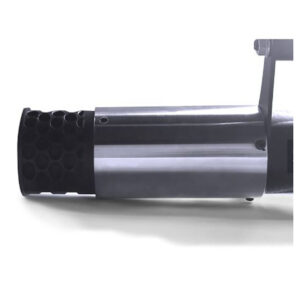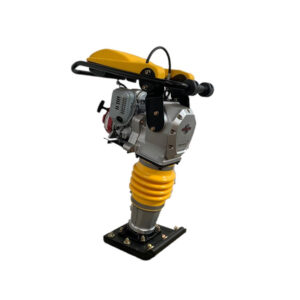Whether you’re a construction professional or a DIY enthusiast, having the right tools at your disposal is crucial to get the job done correctly and efficiently. One such tool, often overlooked yet paramount to many projects, is the post driver. Used primarily for fence installations, its versatility extends well beyond this application.
Post drivers, sometimes referred to as fence post drivers, are tools designed to drive fence posts and similar objects into the ground. They come in various types, including manual, petrol-powered, and hydraulic. The manual version is a simple, tube-like device that manually lifts and drops onto the post. Alternatively, the petrol-powered and hydraulic versions are mechanised and reduce the physical effort required.
The Importance of Post Drivers
Post drivers play a significant role in numerous construction and landscaping projects. They make the task of installing fence posts or similar structures easier, faster, and more precise. Moreover, they ensure that the posts are set firmly into the ground, providing a solid foundation for the structure being built.
How to Use a Post Driver
Using a post driver involves a series of steps. First, you need to place the driver over the post, ensuring it’s aligned with the post’s top. For manual drivers, you then lift and drop the driver onto the post repeatedly until the post is driven into the ground to the desired depth. For petrol-powered or hydraulic drivers, you start the machine and let it do the work for you, carefully guiding the post into place.
Advantages of Using Post Drivers
Post drivers offer numerous advantages. They enable faster and more efficient installation of posts, saving both time and energy. They also provide a higher degree of precision compared to traditional hammering methods, ensuring that the posts are even and properly set.
Efficiency and Speed
One of the most significant advantages of using a post driver is the increased efficiency and speed of installation. Compared to manual methods of hammering or digging a hole and backfilling, a post driver allows you to install posts much more quickly. This time-saving benefit is particularly evident in larger projects where numerous posts need to be installed. Petrol-powered or hydraulic drivers, for instance, can drive posts in a matter of seconds.
Precision and Uniformity
Post drivers offer a high degree of precision and uniformity in driving posts into the ground. This ensures all posts are installed to the same depth and are perfectly vertical, essential for the overall aesthetic and structural integrity of the final installation. Using a post driver also reduces the chance of post damage, as it minimises splitting or cracking that may occur with manual hammering.
Safety
Using a post driver significantly enhances safety during the installation process. The risk of personal injury is minimised as the necessity for repeated heavy hammer swings, often in awkward positions, is eliminated. For petrol-powered or hydraulic post drivers, the user does not need to exert significant physical force, reducing the risk associated with strain or overuse injuries.
Versatility
Post drivers can accommodate a wide variety of post sizes and types, including wood, metal, and composite materials. This makes them a versatile tool for many different projects, from installing fences and decking, to setting up signage or gardening structures.
Durability of Installations
Properly driven posts using a post driver tend to last longer and stand up better to weather and external pressures. This is because driving a post compacts the soil around it, creating a tighter, more secure foundation for the post. The outcome is a more durable and robust installation that can better resist wind, gravity, and the weight of any structure it supports.
Reduced Physical Exertion
With petrol-powered or hydraulic drivers, there is significantly less physical exertion required from the user compared to manual methods. This makes post installation less physically demanding and allows for extended periods of work with less fatigue.
Choosing the Right Post Driver
Selecting the right post driver depends on several factors, such as the scale of your project, the type of posts you’re using, and your budget. Manual drivers are suitable for small-scale projects or soft ground, while petrol-powered or hydraulic drivers are better suited for large projects or hard, compacted soil.
Project Scale
The scale of your project is a critical factor in your choice of post driver. For smaller, less frequent tasks, a manual post driver may be sufficient. These tools are cheaper, However, for larger-scale projects, or if you frequently need to install posts, a petrol-powered or hydraulic post driver might be more suitable. These mechanised drivers can handle larger volumes of work and can dramatically reduce the physical effort and time required.
Type of Posts
The type of posts you’re installing also influences your choice of post driver. Different post drivers can accommodate various post materials and sizes. Ensure the post driver you choose is suitable for the kind of posts you plan to install, whether they’re wooden, metal, or composite, and consider the size and shape of the posts.
Soil Conditions
The conditions of the soil in which you’re driving posts can also affect your choice of post driver. Manual post drivers might struggle with very hard, compact, or rocky soils. In contrast, petrol-powered or hydraulic post drivers have more power and can handle a broader range of ground conditions more efficiently.
Budget
Your budget is another crucial factor to consider. Manual post drivers are less expensive and could be a more cost-effective option for infrequent use or smaller projects. However, petrol-powered and hydraulic post drivers, though more expensive upfront, could provide more value in the long term, especially if you’re frequently installing posts or working on larger projects.
Ergonomics and Ease of Use
The design and ergonomics of the post driver is something that also should also be considered, particularly if you’ll be using it often. Look for a post driver that has a comfortable grip and is easy to lift and manoeuvre. If you opt for a petrol-powered or hydraulic model, consider factors like the ease of starting the machine as well as noise levels of 4-Stroke & 2-Stroke versions.
Maintenance and Lifespan
Finally, consider the maintenance requirements and expected lifespan of the post driver. A durable, well-constructed post driver might cost more initially but save money in the long run due to its longevity. Read reviews and do your research to ensure you’re investing in a quality tool.
Maintenance and Safety Tips for Using Post Drivers
Proper maintenance of your post driver is crucial to ensure its longevity and optimal performance. This includes regular cleaning and timely repair of any worn-out parts. When using a post driver, always ensure you’re wearing appropriate safety gear, including sturdy gloves and safety glasses, whilst following the manufacturer’s instructions to avoid accidents.

